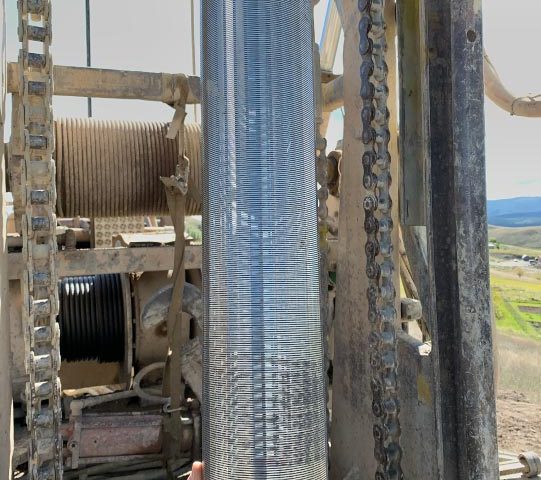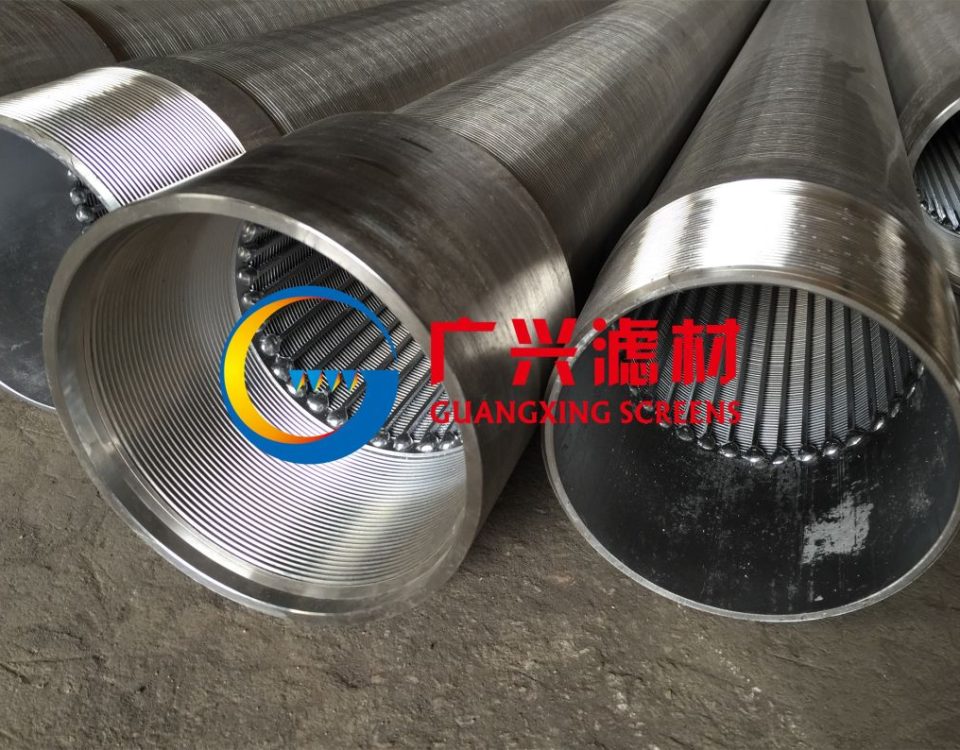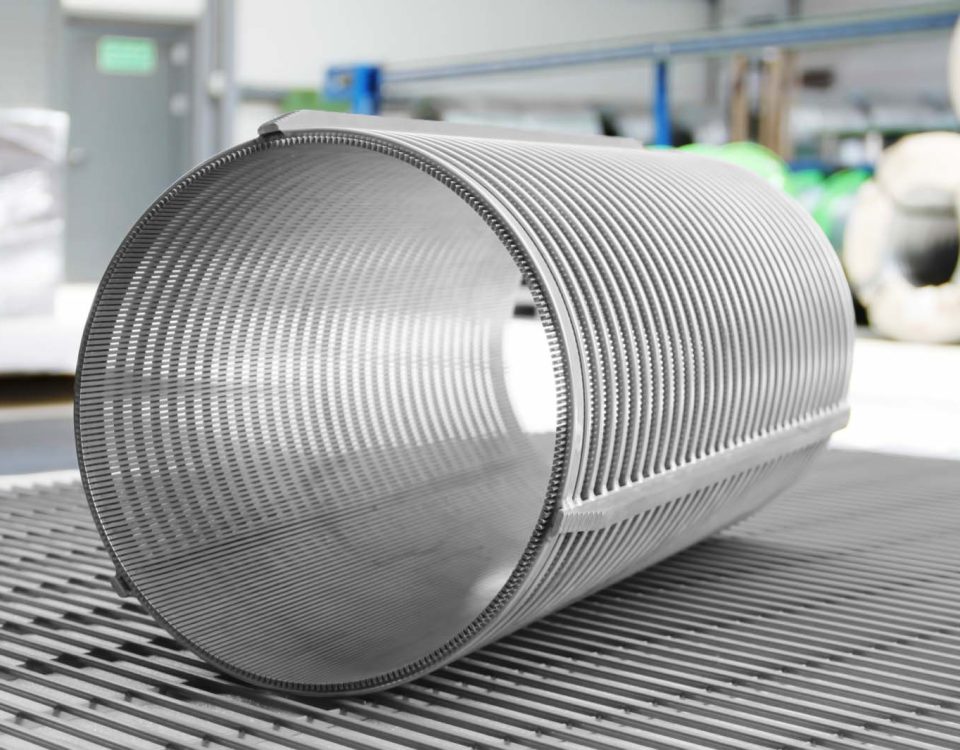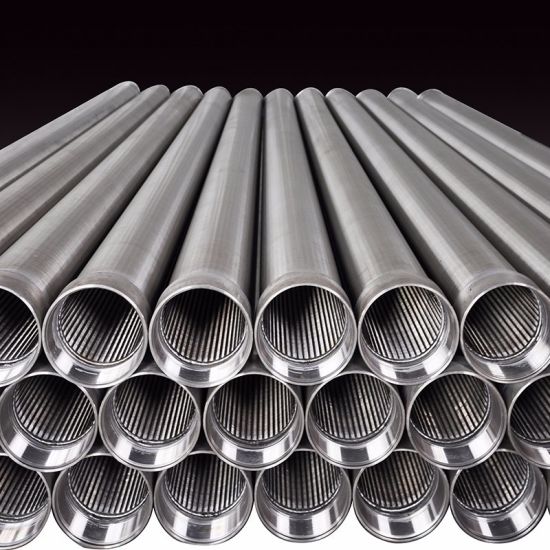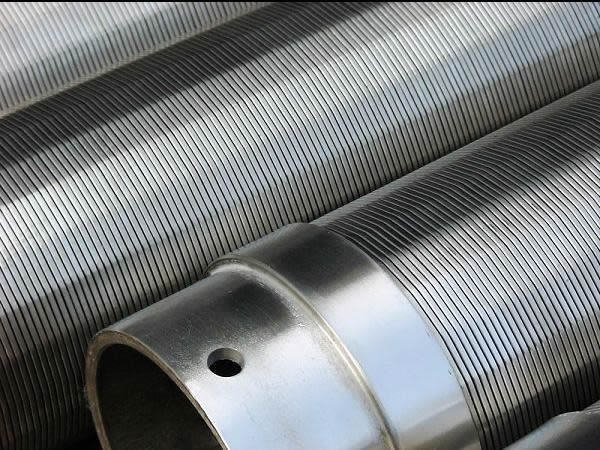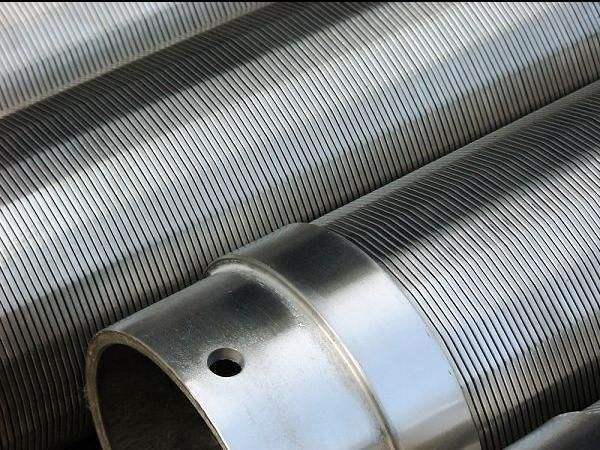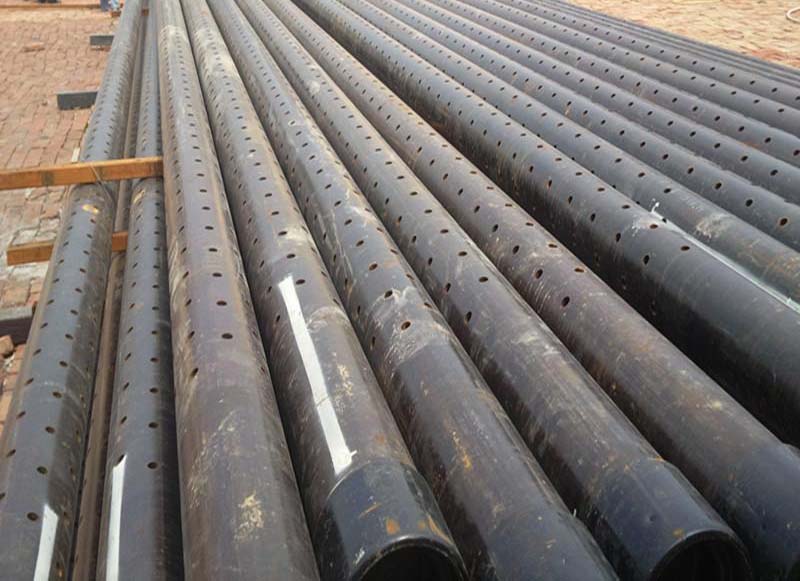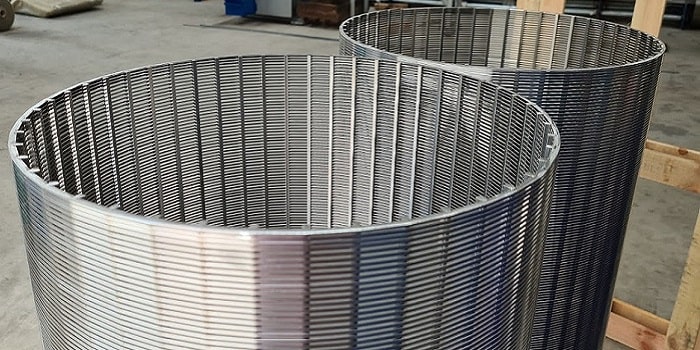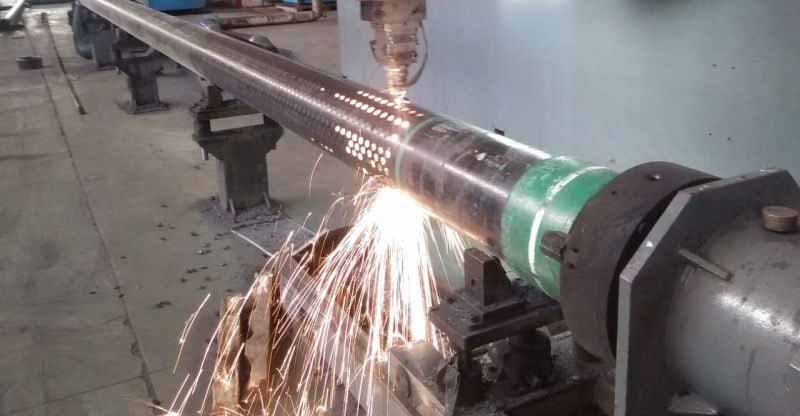
Sand Control Oil Well Screens & Manufacturing process
April 26, 2023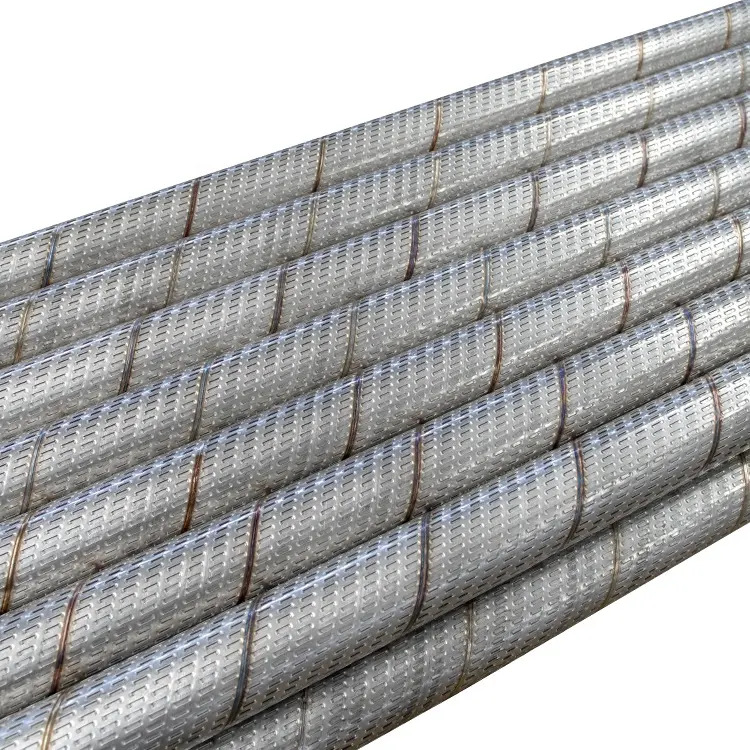
Mill Sloted Screen,Wire Wrap Screen & Bridge Slot well screen: What’s the difference
May 27, 2023stainless steel well screens and well casings Introduction
Stainless steel screens and casings play a
crucial role in various industries, such as water well drilling, oil and gas
extraction, and environmental monitoring. They are essential for filtering out
particles, sand, and debris, ensuring the efficient operation of equipment and
the quality of the extracted resources. This comprehensive guide will provide an
in-depth understanding of how stainless steel screens and casings work, their
applications, manufacturing processes, material selection, and maintenance.
Stainless steel: A versatile material
Stainless steel is a corrosion-resistant
alloy of iron, chromium, nickel, and other elements. Its corrosion resistance, mechanical
strength, and low
maintenance requirements make it an ideal material for screens and casings
in challenging environments. Stainless steel is available in various grades,
each with different properties, making it suitable for specific applications.
Stainless steel grades
There are several stainless steel grades
used for screens and casings, including:
- 304/304L: General-purpose stainless
steel with good corrosion resistance and mechanical properties. - 316/316L: A more corrosion-resistant
grade, suitable for applications in harsh environments or with aggressive
fluids.
Duplex stainless steels: These grades have a dual-phase microstructure
of austenite and ferrite, offering higher strength and corrosion resistance
than conventional stainless steels.
Material selection depends on factors such
as the chemical composition of the fluid, temperature, pressure, and required
strength.
The role of screens and casings in well
construction
Screens and casings are essential
components in the construction of water wells, oil and gas wells, and environmental
monitoring wells. Screens are typically installed in the production zone of
the well, allowing fluids to flow into the wellbore while filtering out sand and
other particles. Casings, on the other hand, are large-diameter pipes that are
inserted into the well to provide structural support and isolate different
geological formations.
Screens
Screens are installed in well completions
to:
- Filter out sand, silt, and other
particles - Protect the wellbore from collapse
- Minimize turbulence and flow
restrictions - Prevent damage to pumps and other
equipment - Ensure the efficient production of
water, oil, or gas
There are various types of screens
available, such as wire-wrapped screens, pre-packed screens, and slotted liners.
The choice of screen depends on factors such as the size of the particles to be
filtered, the well’s production rate, and the formation’s characteristics.
Casings
Casings play a crucial role in well
construction by:
- Providing structural support for the
wellbore - Isolating different geological
formations to prevent cross-contamination - Protecting the well from external
contaminants and pressure
changes - Facilitating the installation of
production equipment
Well casings can be made from various
materials, including carbon steel, stainless steel, and plastic. Stainless steel
casings are preferred in corrosive environments or when the well is exposed to
aggressive fluids.
Manufacturing processes for stainless
steel screens and casings
The manufacturing process for stainless
steel screens and casings primarily involves cutting, forming, and welding
operations. Some common manufacturing processes include:
Wire-wrapped screens
Wire-wrapped screens are manufactured by
winding a continuous wire around a series of support
rods, forming a V-shaped slot. The wire is typically welded to the support
rods, creating a strong and rigid structure. The slot size can be easily
controlled by adjusting the wire spacing and shape.
Pre-packed screens
Pre-packed screens consist of a
wire-wrapped or slotted screen surrounded by a layer of sand or gravel, known as
the filter
pack. The filter pack is held in place by an outer shroud, which is
typically made of perforated stainless steel. Pre-packed screens offer improved sand
control and reduced installation time compared to conventional screens.
Slotted liners
Slotted liners are made by cutting a
series of slots into a stainless steel pipe. The slot size and pattern can be
customized to meet specific project requirements. Slotted
liners are less expensive than wire-wrapped screens but offer lower
filtration efficiency and can be more prone to plugging.
Well casings
Well casings are typically manufactured
from seamless or welded stainless steel pipes. The pipes are cut to the required
length and threaded or coupled to create a continuous casing string. In some
cases, the casing may be coated with corrosion-resistant materials or fitted
with centralizers to improve its performance.
Installation and maintenance
Proper installation and maintenance of
stainless steel screens and casings are essential to ensure the efficient
operation of the well and minimize the risk of failure.
Installation
During the installation process, it’s
crucial to:
- Select the appropriate screen and
casing materials based on the well’s conditions - Properly size and position the
screens to ensure efficient filtration and production - Install centralizers and other
accessories as needed to maintain the casing’s position and integrity - Ensure proper handling and storage of
the materials to prevent damage and corrosion
Maintenance
Regular maintenance is essential to
prolong the life of stainless steel screens and casings. Maintenance activities
may include:
- Periodic inspectionsand monitoring to
identify signs of corrosion, damage, or wear - Cleaning and flushing the screens to
remove accumulated debris and prevent plugging - Monitoring well performance and
adjusting production rates to minimize sand production and prevent erosion - Implementing corrosion
control measures, such as cathodic protection or chemical treatments
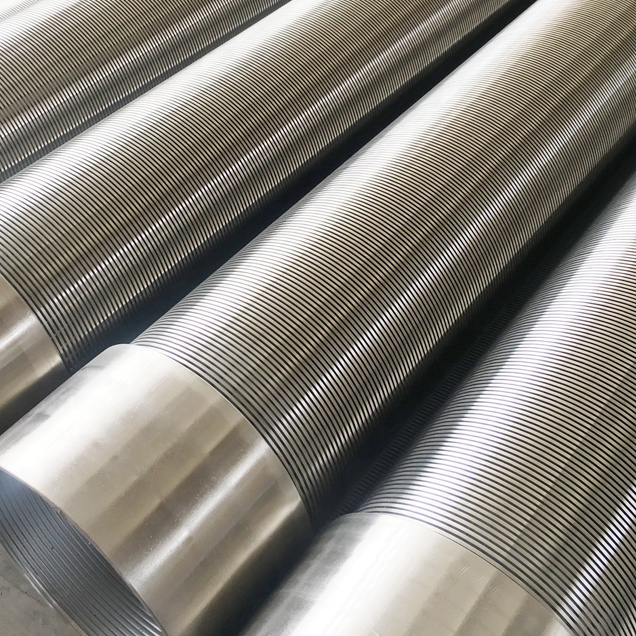
| BASE PIPE | SLIP ON SCREEN JACKET | |||||||||
| Nominal Diameter |
Pipe OD (mm) |
Weight lb/ft W.T[mm] |
Hole size In |
Holes per foot | Total Area of holes in2/ft |
Screen OD (in) |
Open area of screen in2/ft SLOT |
|||
| 0.008” | 0.012” | 0.015” | 0.020” | |||||||
| 2-3/8 | 60 | 4.6[4.83] | 3/8 | 96 | 10.60 | 2.86 | 12.68 | 17.96 | 21.56 | 26.95 |
| 2-7/8 | 73 | 6.4[5.51] | 3/8 | 108 | 11.93 | 3.38 | 14.99 | 21.23 | 25.48 | 31.85 |
| 3-1/2 | 88.9 | 9.2[6.45] | 1/2 | 108 | 21.21 | 4.06 | 18.00 | 25.50 | 30.61 | 38.26 |
| 4 | 101.6 | 9.5[5.74] | 1/2 | 120 | 23.56 | 4.55 | 20.18 | 28.58 | 34.30 | 42.88 |
| 4-1/2 | 114.3 | 11.6[6.35] | 1/2 | 144 | 28.27 | 5.08 | 15.63 | 22.53 | 27.35 | 34.82 |
| 5 | 127 | 13[6.43] | 1/2 | 156 | 30.63 | 5.62 | 17.29 | 24.92 | 30.26 | 38.52 |
| 5-1/2 | 139.7 | 15.5[6.99] | 1/2 | 168 | 32.99 | 6.08 | 18.71 | 26.96 | 32.74 | 41.67 |
| 6-5/8 | 168.3 | 24[8.94] | 1/2 | 180 | 35.34 | 7.12 | 21.91 | 31.57 | 38.34 | 48.80 |
| 7 | 177.8 | 23[8.05] | 5/8 | 136 | 42.16 | 7.58 | 23.32 | 33.61 | 40.82 | 51.95 |
| 7-5/8 | 194 | 26.4[8.33] | 5/8 | 148 | 45.88 | 8.20 | 25.23 | 36.36 | 44.16 | 56.20 |
| 8-5/8 | 219 | 32[8.94] | 5/8 | 168 | 51.08 | 9.24 | 28.43 | 40.98 | 49.76 | 63.33 |
| 9-5/8 | 244.5 | 36[8.94] | 5/8 | 188 | 58.28 | 10.18 | 31.32 | 45.15 | 54.82 | 69.77 |
| 10-3/4 | 273 | 45.5[10.16] | 5/8 | 209 | 64.79 | 11.36 | 34.95 | 50.38 | 61.18 | 77.86 |
| 13-3/8 | 339.7 | 54.5[9.65] | 5/8 | 260 | 80.60 | 14.04 | 37.80 | 54.93 | 66.87 | 85.17 |
Applications of stainless steel screens
and casings
Stainless steel screens and casings are
used in various industries, some of which include:
Water well drilling
In water well drilling, stainless steel
screens and casings are used to filter out sand and silt, ensuring clean and
safe drinking water. They also provide structural support to the wellbore,
preventing collapse and contamination.
Oil and gas extraction
In the oil and gas industry, stainless
steel screens and casings are vital for efficient production and maintaining
well integrity. They are used to filter out sand and other particles that can
damage the wellbore, as well as isolate different geological formations to
prevent cross-contamination.
Environmental monitoring
Stainless steel screens and casings are
also used in environmental monitoring wells to collect samples of groundwater or
soil gas. The corrosion resistance and low maintenance
requirements of stainless steel make it an ideal material for these
applications, where long-term performance is critical.
Geothermal energy
In geothermal
energy production, stainless steel screens and casings are used to withstand
high temperatures and corrosive fluids. They ensure efficient heat extraction
and prevent damage to the wellbore and equipment.
Advantages of stainless steel screens and
casings
Some benefits of using stainless steel
screens and casings in well construction include:
- Corrosion resistance: Stainless
steel’s corrosion-resistant properties make it suitable for use in
challenging environments, such as high temperatures, aggressive fluids, or
corrosive soils. - Mechanical strength: Stainless steel
offers high mechanical strength, improving the well’s structural integrity
and resistance to external forces. - Low maintenance: The corrosion
resistance and durability of stainless steel reduce maintenance
requirements, resulting in lower long-term costs. - Customization: Stainless steel
screens and casings can be manufactured in various grades, sizes, and
configurations, allowing for customization to
meet specific project requirements.
Conclusion
Stainless steel screens and casings play a
vital role in ensuring the efficient operation and longevity of wells in various
industries. Their corrosion resistance, mechanical strength, and low maintenance
requirements make them an ideal material
choice for challenging environments. By understanding how stainless steel
screens and casings work, the manufacturing processes involved, and their
applications, it is possible to make informed decisions about the most suitable
materials and designs for specific well construction projects. Proper
installation and maintenance practices will further ensure the best possible
performance and longevity of these essential well components.

